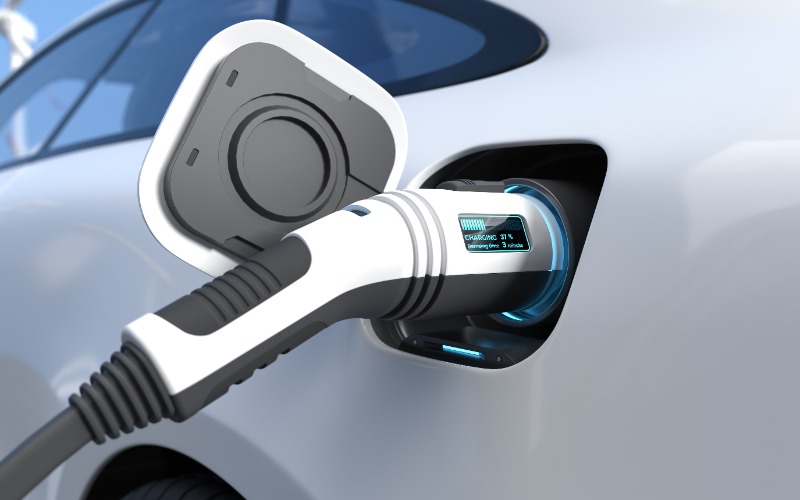When considering the investment in electric vehicles, many express interest but struggle with the initial steps of setting up an electric vehicle charger. Kevin Kohl is the director and product manager at Legrand. Being a top specialist in electrical and digital building infrastructure, Legrand aims to support the change from gas to electric vehicles by debunking the public’s common misunderstandings about EV charging.
In this article, Kohl takes the expertise he’s learned from working with Legrand and lays out some essential information for those interested in electric vehicles and the charging setup opportunities that come with them. Kohl’s insights (as follows) can help you understand how to invest in this technology by highlighting which setups are best for certain lifestyles and outlining the fastest charging solutions available.
The Best EV Charger Setup
Installing an EV charger at home creates easy access to electric vehicle charging, and in general, it’s a great solution for future-proofing your house and increasing potential resale value down the line. For a plug-in EV charger, the initial investment is minimal. To begin, you simply need the right outlet, making this charger the easiest to invest in to start charging at home. If you want to charge your car at a faster rate, then a hardwired EV charger is the better choice. You can work with a professional for this installation.
To set up a plug-in EV Charger in a residential area, the house, garage, or yard requires a NEMA 14-50 outlet. This type of outlet is commonly found in electric dryers, ranges, recreation vehicles, and more. These outlets are needed for setup for Level 2 charging speeds. When planning an outdoor charger setup, a weather-resistant version of the NEMA 14-50 outlet is required to avoid electrical issues.
For most models, individuals can plug the charger’s cord into the appropriate outlet and attach the unit to a stud on the wall. For weather-proofing, the simplest solution is to install the EV charger inside. Outside is also an option so long as the charger has an appropriate outdoor rating (such as NEMA 3R) and can be mounted against an appropriate surface.
Fastest Charging Solutions for Electric Vehicles
Presently, there are three charging levels: 1, 2, and 3, commonly referred to as DC, or Direct Current, fast charging. Level 1 chargers make use of standard outlets, resulting in slow and less reliable charging. Conversely, Level 2 chargers utilize a dedicated 240V power source, guaranteeing faster and more reliable EV charging. This choice provides convenient, stress-free charging between sessions. It represents a cost-effective alternative to Level 3 DC charging, which is the fastest and more typically seen in roadside and on-the-go cases.
Factors to Consider When Choosing an EV Charger
When choosing an EV charger, we recommend a simple set of steps to make the best decision for your home and vehicle. First, it is extremely important to check the compatibility of your electric vehicle with the chargers that work for your model. For example, with some vehicle types, an adapter is necessary.
Secondly, you’ll want to consider which charger level to invest in. Most EVs come with Level 1 chargers, but Level 2 chargers are much faster (four times as many miles per hour!) and can be easily installed in the home. Unlike a Level 1 charger, Level 2 chargers are more frequently permanently affixed to wall surfaces and have charging cables at least 18 feet long. Level 2 chargers often qualify for utility rebates, so it’s the type we recommend in most cases.
Third, consider where you want to install the EV charger, as that will impact which choice you should select. This step is broken down into a few considerations. Most importantly, you’ll want to consider what’s most convenient. If you park in the driveway every night, then lean into that and plan for an outdoor EV home charging station. If you always drive in and park in the left spot of your garage, you’ll want to go for an indoor option that can accommodate that routine and layout.
Many of the EV home chargers available are conveniently designed to be installed indoors or out, but the accessories of the installation can vary to ensure electrical safety in a specific environment.
It’s also important to consider the reach of the charging cable: Can it also even reach multiple spots in the case of multi-driver homes? And, on the flip side of those points, how easy will it be to store the cable and keep it out of the way when you aren’t charging? This line of questioning may seem overkill, but it is the EV equivalent of pulling up to the wrong side of the gas pump!
Finally, you’ll want to look at the features that are important to you to make your EV charger selection. Safety is key here since this is an electrical product: make sure your charger choice has been rigorously tested and certified and that it’s manufactured by a brand you trust.
Hardwired Solution vs. Plug-In Charger
Hardwired EV chargers allow for an electrical vehicle to be powered directly into an electrical source. In turn, the hardwired EV chargers can boost rates and range to fully recharge a vehicle in 6-8 hours and get drivers up to 46 miles per hour of charging (depending on vehicle make and model). Aside from speed, hardwired EV chargers are permanently wired into the home’s electrical infrastructure, which can help to improve a home’s resale value.
While their charging speeds are not as quick, plug-in Level 2 EV chargers still pack a punch! Plug-in models offer a more versatile solution, allowing a charger to connect to a standard 240-volt outlet to charge an electric vehicle. This is enticing for folks who may be considering a move and would like to take their charger with them or for those “techies” who look to stay leading-edge and may upgrade their equipment easily over time.
Impacts on the Electric Bill
Surprisingly, it is cheaper to charge an EV (by hundreds of thousands of dollars!) than it is to fill up a gas-powered vehicle. The difference between the two amounts depends on location, but charging an EV is cheaper in most parts of the United States. One reason for this is that gas prices fluctuate so frequently, whereas EV chargers have fairly stable prices.
Another benefit of at-home EV chargers is that you can obtain rebates and tax credits from incentive programs instituted by federal, state, and local governments.











